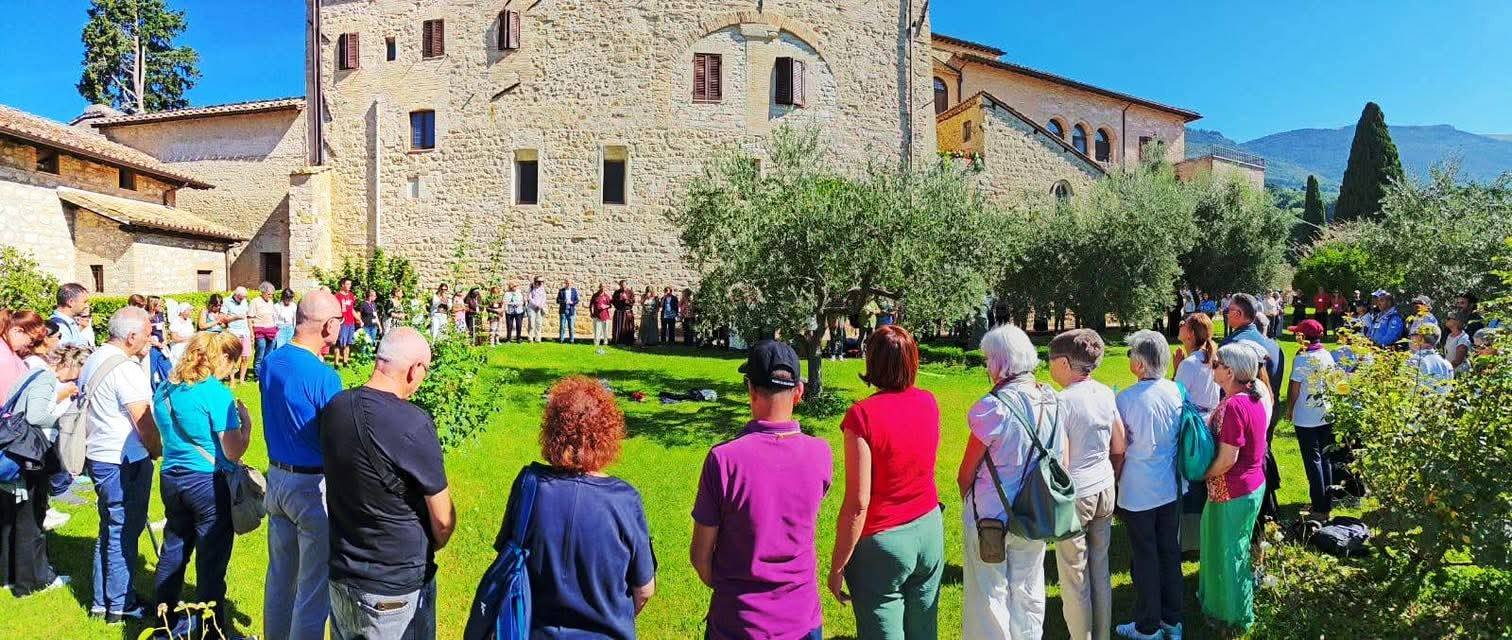Itineraries in Franciscan Sanctuaries
“Nature is full of words of love”
Laudato Si’ 225

The Itineraries in Franciscan Sanctuaries program allows organized groups on pilgrimage to Assisi to be able to have an immersive experience in one of the Laudato Si’ places, for two hours, with a focus on ecological spirituality. This is a “scaled-down” version of the Laudato Si’ Retreat, keeping the song-cry-action content.
Registration to organize a Pathway is done through the form. Upon completion, the organizer is contacted with an email to complete the registration, entering detailed information about their group, the chosen Shrine, needs, number of participants, and arrival and departure time. The email provides a schedule, which can be modified as needed, with all logistical information.
You can choose to do the Prayer Route at any of these Shrines:
- Sanctuary of San Damiano (exclusive to the Laudato Si’ Center, at the Garden of the Canticle);
- Basilica of St. Francis (itinerary on the works of creation);
- Shrine of Renunciation (exclusive to the Laudato Si’ Center at the apse garden);
- Eremo delle Carceri (see section “immersion in the silence of the forest”).
When the organizer confirms the location and program of the itinerary, the Laudato Si’ Center makes reservations for the chosen shrine and arranges through the Volunteers for the route

The Prayer Itinerarie allows people to experience the place, and in particular the discovery of the Canticle of the Creatures and Laudato si’, with a linear narrative on the song-cry-action pattern.
The song of creation is experienced through sensory immersion in the text of St. Francis, presented through Franciscan sources and the prayer of the Laudato Si’ Chaplet.
The cry of creation becomes explicit in the narrative context leading to the composition of the Canticle, and in the last two stanzas introducing the shared prayer of “tears.”
Action in creation is present in the final invitation of the Canticle, and in the concrete spirit of the prayer.
For this reason, these paths are particularly suitable for young people, and for vocational discernment groups, as well as for realities concretely engaged in caring for the common home.